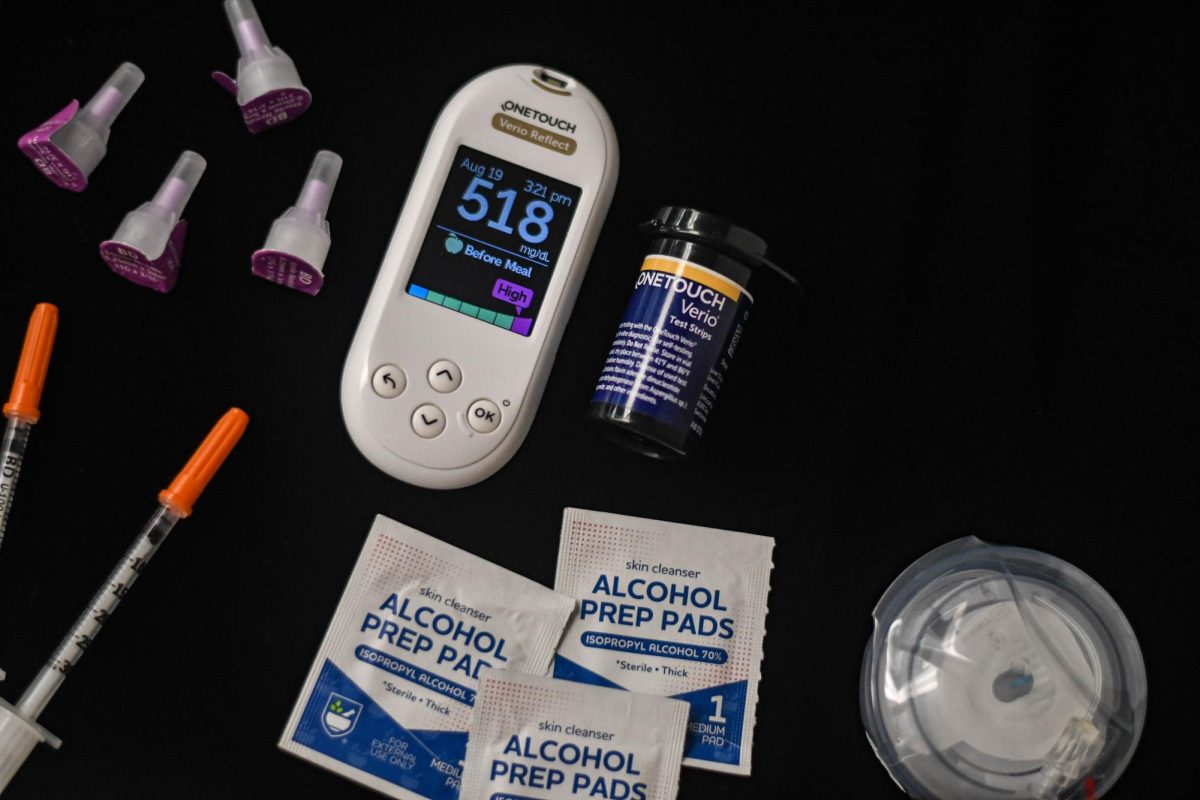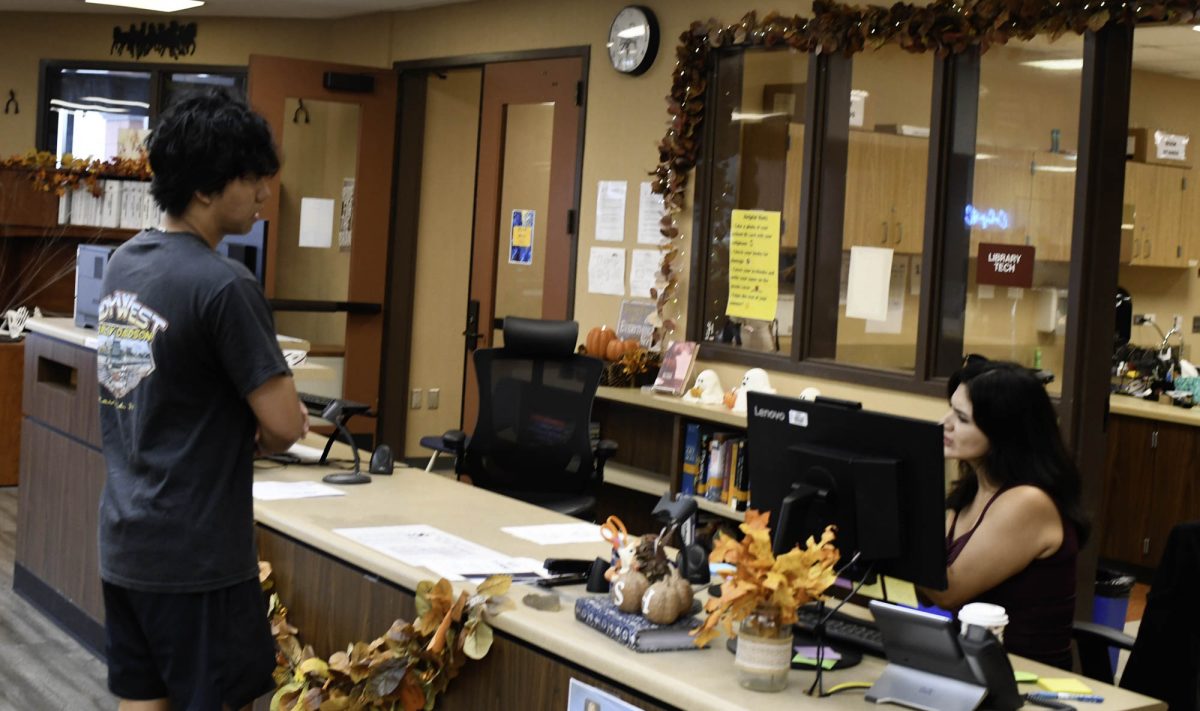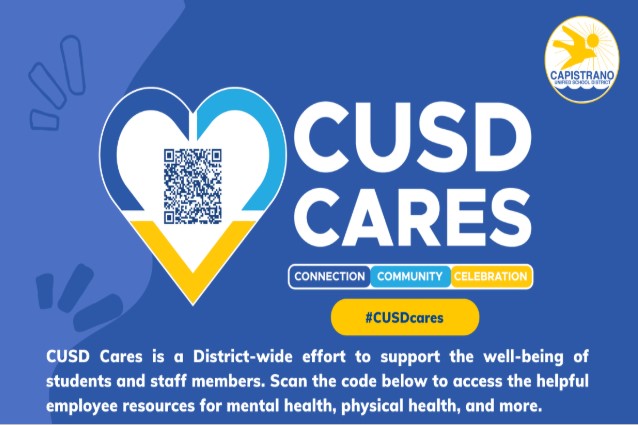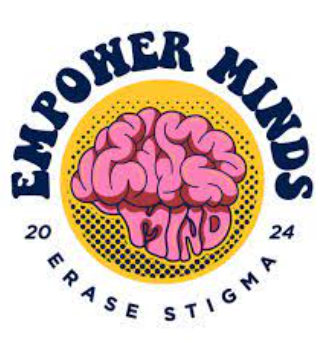It’s 2007 and the world is in a frenzy over the announcement of beloved Nick Jonas’ diagnosis. While many believed the stigmatized and relatively unknown disease would be fatal to the celebrity, it shed light on the 1.8 million Americans that deal with it daily.
According to cdc.gov, only six percent of U.S. adults diagnosed with diabetes are confirmed to have type one—a major cause for the lack of education and necessity for change regarding the chronic illness.
Type two diabetes is the most prevalent disease, manifesting over several years and often brought on by an unhealthy diet, promoting the idea that type one diabetes is the same way. It causes the belief that those with type one are at fault for their diagnosis, when really it is an entirely genetic issue.
While not as common, there are more type one diabetics than it seems. A frequent display of the steps taken to care for a patient, CGMs (continuous glucose monitors) are often seen on the arms of diabetics.
Christina Santala, an English I teacher at San Juan Hills, provided her story of getting a diagnosis and how she manages it while teaching her freshman classes.
“You can do everything right and still have a bad day. Being a full-time pancreas is really hard,” said Santala.
Her mention of the pancreas is the root cause of the illness. While type one diabetics are often accused of progressing their condition with a lack of exercise and sugary foods, it is in truth caused by antibodies attacking and killing cells of the pancreas, the organ responsible for insulin production.
Insulin is a hormone responsible for processing glucose and utilizing it for energy. While type two is caused by a resistance to insulin, type one diabetics cannot produce it at all.
It is important to know the signs as they are typically mistaken for a common virus or symptoms of growth. Common symptoms include increased thirst, fatigue, extreme weight loss, brain fog, and blurry vision.
The American Diabetes Association provides several statistics including the fact that an estimated 18,200 youth were officially diagnosed with type one in 2017-2018.
However, for many patients such as sophomore Miranda Dillon, it can begin as soon as birth. She presented symptoms as early as eight months old.
“I’ve had doctors tell me that even if you bolus the correct amount, your blood sugars can still be bad…but I feel like I’ve had it for so long so I’m kind of used to it at this point,” said Dillon.
Fortunately, with the technology advancements today, diabetes is usually not disabling, unless peers choose to use discriminatory language. Education is not only important for raising awareness but also to end the stigma and harmful assumptions.
However, there are still setbacks that require change. FDA.gov recently approved an over-the-counter glucose monitor. While it does assist diabetics who are not insulin dependent, the price difference is a concerning gap.
Type one diabetics that require daily monitoring of their blood sugar levels, a number fluctuated by hormones and intake of carbohydrates, pay an average of three hundred dollars for a month of CGMs.
But the newly approved monitor is less than one hundred dollars per month. Created by Dexcom, Stelo has received new advancements that arguably should have been provided to diabetics.
For example, while diabetics have to wear three CGMs per month, Stelo’s wear has been extended to only two every thirty days.
“Navigating our medical world and insurance…everything has been a nightmare. There have been times where I’m calling doctors begging to refill my prescriptions. I need insulin or I am going to die,” said Santala.
Although there is a long way to go, type one diabetics have built a welcoming community despite the struggles.
While they fight for a better way of life, things like JDRF walks, galas, summer camps, and other group activities have provided a place for those with the diagnosis to feel seen.








